What is bacteria kids?
Learning about the invisible world around us can be one of the most exciting adventures for a child! Imagine discovering tiny creatures that live everywhere, doing all sorts of amazing jobs – some helping us, and some we need to be careful of. It sounds like something out of a science fiction movie, but it's actually the incredible reality of bacteria!
"Bacteria for Kids" isn't just a phrase; it’s an exciting educational journey designed to introduce children to the fascinating realm of microorganisms in a way that's both fun and perfectly safe. It’s about sparking curiosity, transforming complex science into engaging stories, and showing young learners that even the smallest things can have the biggest impact.
In this article, we’ll dive into what bacteria truly are, how children can safely explore microbiology through specially designed programs, and what kinds of exciting, hands-on activities are included to make this learning experience unforgettable. Get ready to explore a microscopic world of wonder!
What Is Bacteria Kids and How Does It Work?
"Bacteria Kids" refers to a wonderful collection of educational resources and learning programs specifically crafted to introduce children to the basics of microbiology. Think of it as a friendly guide that takes complex scientific ideas—like what cells are, how germs work, or how tiny organisms fit into vast ecosystems—and breaks them down into easy-to-understand visuals and interactive lessons.
This innovative approach simplifies the intricate world of microorganisms, making it accessible and exciting for young minds. Instead of dense textbooks, "Bacteria Kids" uses engaging stories, colorful animations, and hands-on activities to explain concepts like "good" bacteria living in our tummies to help us digest food, or how "bad" bacteria can make us sick if we don't wash our hands. The programs are designed to demystify science, transforming what might seem daunting into an intriguing exploration. By making science relatable and fun, "Bacteria Kids" naturally encourages curiosity about the natural world and, importantly, reinforces the significance of good hygiene habits. It's about planting the seeds of scientific inquiry and understanding right from a young age.
What Educational Purpose Does Bacteria Kids Serve?
The primary learning goals of "Bacteria Kids" are multifaceted, aiming to build a strong foundation in scientific literacy. First and foremost, it’s about teaching basic microbiology concepts: what bacteria are, where they live, and the different roles they play. Children learn that not all bacteria are "germs" that cause illness; many are essential for life, helping plants grow, making delicious foods like cheese and yogurt, and even aiding our own digestion.
Beyond foundational knowledge, these programs serve a crucial role in promoting hygiene awareness. By understanding why handwashing is important (to get rid of invisible harmful bacteria), children are more likely to adopt and maintain good hygiene practices. This practical application of scientific knowledge is invaluable for their health and well-being. Furthermore, "Bacteria Kids" fosters scientific thinking by encouraging observation, critical questioning, and experimentation. It aligns perfectly with modern STEM (Science, Technology, Engineering, and Mathematics) education standards, which emphasize hands-on learning and problem-solving skills. By making invisible life forms understandable and fascinating, these programs ignite a lifelong interest in biology and the wonders of the natural world.
How Can Children Learn About Microbiology Using Bacteria Kids?
"Bacteria Kids" programs utilize a variety of engaging learning tools to make microbiology accessible and exciting. These often include vibrant animations that bring microscopic worlds to life, showing bacteria moving, growing, and interacting in their environments. Physical models help children visualize the different shapes of bacteria (like rods, spheres, and spirals) and understand their basic structures. Educational videos offer guided tours into the microbial world, often featuring friendly characters who explain complex ideas in simple terms.
Perhaps the most captivating tools are the microscope visuals, which allow children to see magnified images of real bacteria, often sourced from safe, everyday items like yogurt or pond water. Interactive lessons are at the heart of the "Bacteria Kids" experience. Children might engage in activities that differentiate "good vs. bad bacteria," learning how the former helps make yogurt or decompose compost, while the latter can cause illness. They might explore the concept of ecosystems on a micro-scale, understanding how bacteria interact with other tiny organisms.
These programs are carefully designed with age-appropriate learning levels in mind, catering to elementary school children with simpler concepts and more interactive play, and expanding to middle schoolers with slightly more detail and guided experiments. Parents and teachers can easily guide participation, using the provided resources to facilitate discussions, supervise activities, and answer questions, ensuring a rich and rewarding educational experience for every child.
What Activities or Experiments Are Included in Bacteria Kids?
The fun truly begins with the hands-on activities and experiments included in "Bacteria Kids"! These activities are designed to be both educational and safe, often involving non-pathogenic (harmless) bacteria that can be found in everyday life. One popular activity is growing bacterial cultures from safe sources, such as observing how bacteria ferment milk to make yogurt or swabbing surfaces (like hands or a doorknob) onto nutrient agar in a petri dish to see invisible microbial growth (always under strict adult supervision and with clear instructions on how to dispose of cultures safely).
Observation exercises are also key, encouraging children to compare results from different conditions—for instance, noting the difference in bacterial growth on a "clean" versus "dirty" surface after an experiment. This helps them grasp the importance of hygiene in a tangible way.
Beyond experiments, "Bacteria Kids" encourages creative projects. Children might be asked to draw their own interpretations of bacteria, building 3D models using clay or craft supplies to represent different bacterial shapes and structures, or even engaging with digital simulations that let them control microbial environments. Throughout all these activities, immense emphasis is placed on safety measures. This includes clear instructions on proper handwashing techniques, the use of gloves when handling any cultures or materials, and, most importantly, constant adult supervision to ensure a safe and productive learning environment. The goal is to make scientific exploration both exciting and entirely risk-free.
How Safe Is the Bacteria Kids Program for Young Learners?
Safety is the absolute top priority for any educational program involving young learners, especially when it comes to something as potentially intimidating as bacteria. "Bacteria Kids" programs are meticulously designed to be incredibly safe. A core principle is that all experiments and activities strictly utilize non-pathogenic (meaning non-disease-causing and harmless) bacteria or rely on realistic simulations. Children will never be exposed to dangerous germs.
Rigorous safety protocols are embedded into every aspect of the program. This includes clear and consistent instructions on essential practices like thorough handwashing before and after any activity, the mandatory use of gloves when handling even the safest bacterial cultures, and the paramount requirement for adult supervision. Whether in a classroom or at home, a responsible adult must always be present to guide the children, ensure proper handling of materials, and maintain a sterile environment. The goal of "Bacteria Kids" is to demystify microbiology and foster a love for science, and this can only be achieved by ensuring that every exploration is not just educational and fun, but also perfectly safe. Parents and educators can rest assured that these programs are crafted to provide a secure and enriching scientific learning experience.
FAQ Section:
Can kids safely grow bacteria at home?
Yes, with proper guidance and the right materials, kids can safely grow harmless bacteria at home. Programs like "Bacteria Kids" often provide kits with non-pathogenic bacteria (like those found in yogurt) and safe nutrient agar for petri dishes. Adult supervision is crucial to ensure safety protocols, like proper handwashing and disposal, are followed.
Are all bacteria harmful?
Absolutely not! This is one of the most important lessons in "Bacteria Kids." While some bacteria can cause illness (we call these "germs"), many more are beneficial and essential for life. Good bacteria live in our bodies to help us digest food, others help plants grow, and some are used to make delicious foods like cheese, yogurt, and bread.
How can teachers use Bacteria Kids in classrooms?
Teachers can integrate "Bacteria Kids" into their science curriculum as a hands-on supplement. They can use the provided lesson plans, videos, and activities to introduce microbiology concepts, conduct safe classroom experiments, and spark discussions about hygiene and the natural world. It’s an excellent way to meet STEM education goals and make science engaging.
Conclusion
"Bacteria Kids" is more than just a science lesson; it’s an invitation to explore a hidden world that shapes so much of what we see and experience every day. By transforming complex biological concepts into fun, safe, and engaging activities, these programs ignite a genuine curiosity about science in young learners. They teach essential knowledge about microorganisms, promote critical hygiene habits, and foster the kind of scientific thinking that will serve children well throughout their lives.
In a world increasingly driven by scientific discovery, sparking this interest early on is incredibly valuable. So, whether you're a parent looking for enriching home activities or an educator seeking innovative classroom tools, embracing programs like "Bacteria Kids" is a fantastic way to develop scientific curiosity and instill good hygiene habits. Let's encourage our children to become the next generation of curious scientists, ready to explore, understand, and appreciate the amazing, tiny world of bacteria!


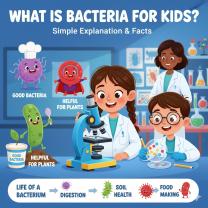


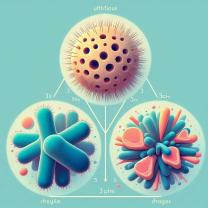




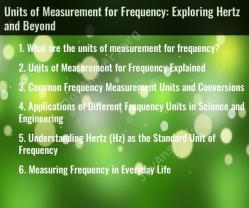
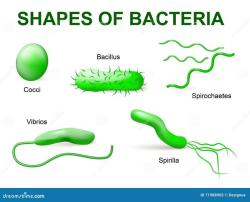

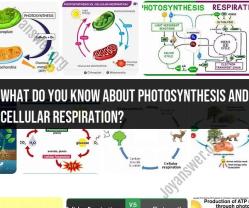
BioDad77
on October 09, 2025A wonderful way to spark scientific curiosity early. It clearly addresses safety concerns, which is key. Highly recommend this approach to **learn about bacteria for children**.